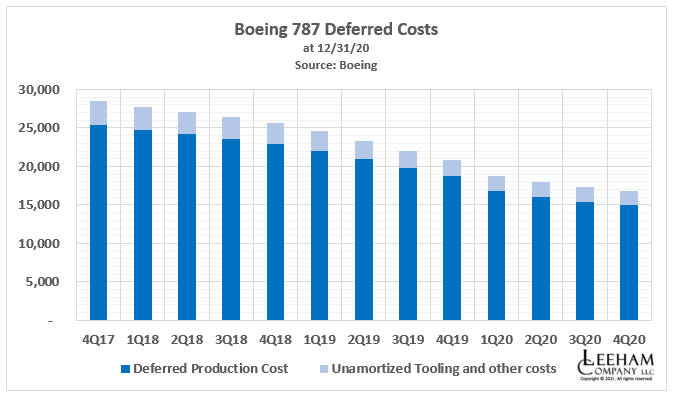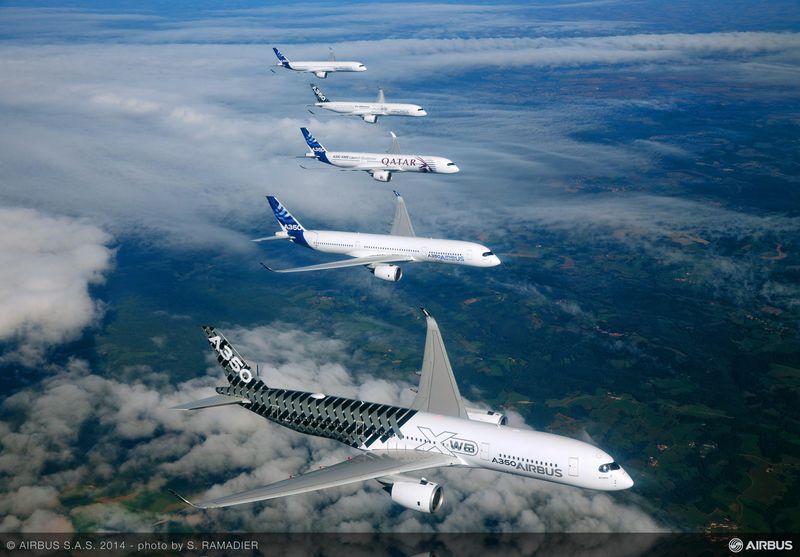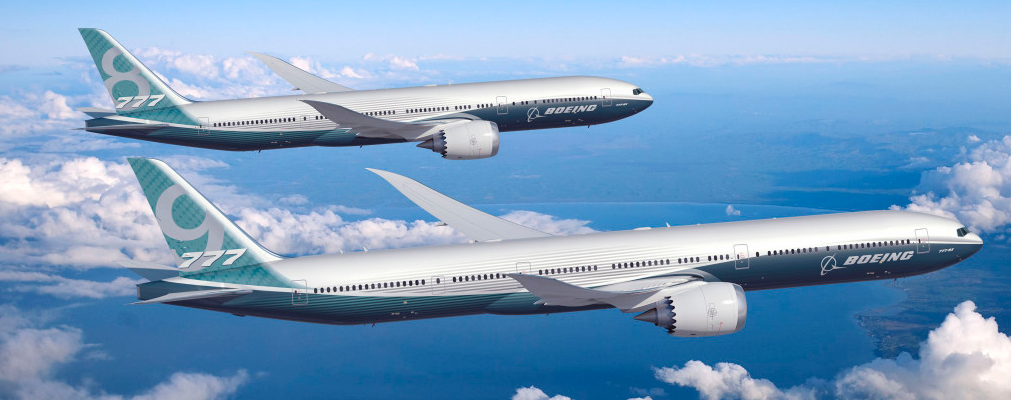Leeham News and Analysis
There's more to real news than a news release.
Pontifications: Unraveling the numbers
Feb. 1, 2021, © Leeham News: Understanding the real market demand for an airplane sector is a complicated thing.
What Airbus and Boeing say the market is for an airplane sometimes is a matter of what they don’t say.
On the Jan. 27 earnings call, Boeing set the program accounting for the 777X at 350 airplanes. This number declined from 400. Simultaneously, Boeing took a whopping $6.5bn forward loss on the program. (Not all is attributed to the accounting block.)
Later in the same call, CEO David Calhoun said, “Across the total widebody market of more than 8,000 projected deliveries over the next two decades, we see replacement demand for over 1,500 large widebody airplanes which are well suited for the 777X.”
Some interpreted this to mean that Boeing expects to sell 1,500 777Xs.
Well, not really.
So, let’s unravel these numbers and what “market demand” or “replacement demand” means. Everything discussed below applies equally to Airbus or Boeing.
Day of reckoning for the HNA Group
By Vincent Valery
Jan. 31, 2021, © Leeham News: After years of financial struggles, the HNA Group finally declared bankruptcy on Jan. 29. Despite a government-led attempt at restructuring the over-indebted group, the group couldn’t avoid such a fate due to the struggles of its numerous subsidiaries exacerbated by the COVID-19 pandemic.
LNA wrote an article in the fall of 2019 on the group’s complex structure and ongoing financial struggles.
HOTR: Boeing continues to burn off deferred charges
By the Leeham News Team
Jan. 29, 2021, © Leeham News: With all the headlines about Boeing’s record-breaking 2020 loss and the $6.5bn forward loss for the 777X program, there was one item overlooked.
Boeing continues to reduce the deferred production costs for the 787. This is despite reducing production last year and suspending deliveries from October.
Deferred costs continued to come down quarter-over-quarter. Peaking at more than $32bn years ago, the total now is $16.6bn.
Bjorn’s Corner: The challenges of hydrogen. Part 22. Hydrogen fuel cells
January 29, 2021, ©. Leeham News: Over the last weeks, we looked at Center of Gravity (CG) problems with rear fuselage liquid hydrogen tanks as used in Airbus’ ZEROe turbofan airliner concept. We can conclude that the CG shift is manageable for a short-range aircraft (range below 2,000nm).
Now we spend the next Corners diving into hydrogen fuel cell technology and how it can benefit a hydrogen-fueled airliner.
Podcast: 10 Minutes About Boeing’s 2020 Financial Results
Jan. 28, 2021, © Leeham News: Boeing on Jan. 27 reported its 2020 financial results. They were ugly, to nobody’s surprise. Beset by the 737 MAX grounding all year, delays in the 777X program, a suspension of deliveries from October of the 787, continued issues with the KC-46A tanker and problems with the space program, “ugly” financial results were expected.
grounding all year, delays in the 777X program, a suspension of deliveries from October of the 787, continued issues with the KC-46A tanker and problems with the space program, “ugly” financial results were expected.
LNA talks about the 777X, 737 MAX and 787 programs in today’s episode of 10 Minutes About.
The A350, Part 3: The A350-800 versus A330-900
Subscription Required
By Bjorn Fehrm
Introduction
January 28, 2020, © Leeham News: Last week, we analyzed the smallest member of the Airbus A350 family, the A350-800. After Airbus changed the variant to a non-optimal “cut and shut” variant, it was no longer competitive.
Airbus froze the development of the A350-800 and then let it slip out of the program (it’s never officially canceled). The A330neo became the replacement for the A350-800. Was this the right decision? Is the A330neo the better airplane?
Summary
- We saw the A350-800 in its final form had a problem competing with Boeing’s 787. This created a problem for the Airbus widebody program below 300 seats.
- After a thorough investigation, Airbus found a way to update the A330 to take the place of the A350-800. We use our airliner performance model to find out how well the replacement performs.
“I’m sure glad 2020 is in the rear view mirror.”–David Calhoun, Boeing CEO
By Scott Hamilton
Jan. 27, 2021, © Leeham News: “I’m sure glad 2020 is in the rear view mirror.”
This was Boeing CEO David Calhoun’s opening statement in his appearance today on CNBC’s Squawk Box.
Calhoun appeared on the financial news network following the release of its 2020 full year financial results.
“The one big charge was for the 777X program,” Calhoun said. Boeing took a forward pre-tax charge of $6.5bn for the program. Carter Copeland of Melius Research noted in a video this morning that this probably was related to an adjustment in the accounting block. Calhoun said on CNBC that Boeing adjusted the accounting block, which has not been publicly announced, as part of the charge.
“Based on everything we learned in the 737 MAX recertification effort, we put more time into the 777X effort. It’s going to be a little more costly and take more time to certify,” he said.
Calhoun expects the 777X will be a big money maker in the future.
Update 1: Big loss for 2020 for Boeing; $6.5bn charge for 777X-delivery now late 2023; 737 MAX cleared by EASA
Updated
- Europe’s aviation regulator EASA clears Boeing 737 MAX for return to service with minor, additional requirements. Information is here.
- $6.5bn charge for 777X program. First delivery now late 2023, nearly 4 years late.
By Scott Hamilton
Jan. 27, 2021, © Leeham News: Boeing today announced a $11.941bn net loss for the full year 2020, as expected.
Boeing reported an operating loss of $12.767bn. The company’s cash flow was a negative $18.41bn last year. It ended the year with $25.6bn in cash and securities.
The press release is here. The webcast is at 10:30 Eastern time and may be accessed here. Calhoun message to employees is here. The earnings presentation is here.
Podcast: 10 Minutes About the A321XLR and Why Boeing Can’t Compete
Jan. 26, 2021: © Leeham News: Today’s episode is 10 Minutes About the A321XLR and Why Boeing Can’t Compete. LNA’s Judson Rollins worked  for Boeing when the MAX was created. He brings an airline background as well, having worked for Air New Zealand and Continental.
for Boeing when the MAX was created. He brings an airline background as well, having worked for Air New Zealand and Continental.
Boeing’s production plans
Subscription Required
By Vincent Valery
Introduction
Jan. 26, 2021, © Leeham News: LNA wrote earlier this month that Boeing needs a boring year after a challenging 2020. Ramping up 737 production, clearing up the accumulated 737 MAX and 787 inventories, and keeping 737-7/10 and 777X certification campaigns on track are among the OEM’s main goals for 2021.
Like Airbus, Boeing had to significantly adjust its production plans downward for the foreseeable future as airlines pushed back scheduled deliveries. Boeing’s latest plans involve increasing the 737 line production rate to 31 per month by early 2022. The 787 production rate will go down to five per month (from a peak of 14) in the second quarter of 2021. The 747, 767, and 777 rates remain at 0.5, three, and two per month, respectively.
Ahead of Boeing’s earnings release on Jan. 27, LNA analyzes the updated delivery schedule for coming years on the five major commercial programs.
Summary
- Shallower rates on 747 and 767;
- Dreamliner delivery delays;
- Analyzing new 737 MAX order and inventory cleanup;
- Notable changes behind stable 777 production rate.









